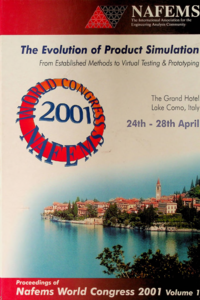
This paper on "Improvements on Simulation of the Forging Cycle" was presented at the NAFEMS World Congress on The Evolution of Product Simulation From Established Methods to Virtual Testing & Prototyping - 24-28 April 2001, The Grand Hotel, Lake Como, Italy.
Summary
In the traditional approach the numerical simulation of the forging process is mainly focused on the filling of the dies, optimising the geometry of dies and preforms, in order to minimise scrapped material, loading on the dies and material flow defects. Some assumptions are frequently adopted such as the uniform or quasi-uniform initial temperature of the dies, the possibility to neglect the dies lubrication phase, the changes of die material behaviour as concerns strength, hardness, toughness due to fatigue phenomena.
In order to overcome some of these limitations a forging cycle has been reproduced in laboratory conditions and monitored using a 250 tons screw press equipped with modified dies embedding thermocouples at different locations near the contact surface of the dies, as well as with strain gauges to measure forging forces. The purpose was a collection of reliable data on temperature field evolution and total forging load during the forging cycles, including loading of the billet, forging, unloading of the forged parts, lubricating the dies. These data have been used to set up and refine a numerical simulation of the whole process, developing and validating a reliable model of the phase relevant to the spraying of the lubricant on the die surface.
The results of this improved numerical simulation can be summarised as follows: i) determination of the effective thermal field in the dies, ii) evaluation of the number of forging cycles required to reach a steady thermal field before the forging of the component, iii) a numerical model of the lubricant spraying suitable to be applied in the analysis of industrial forging processes.



